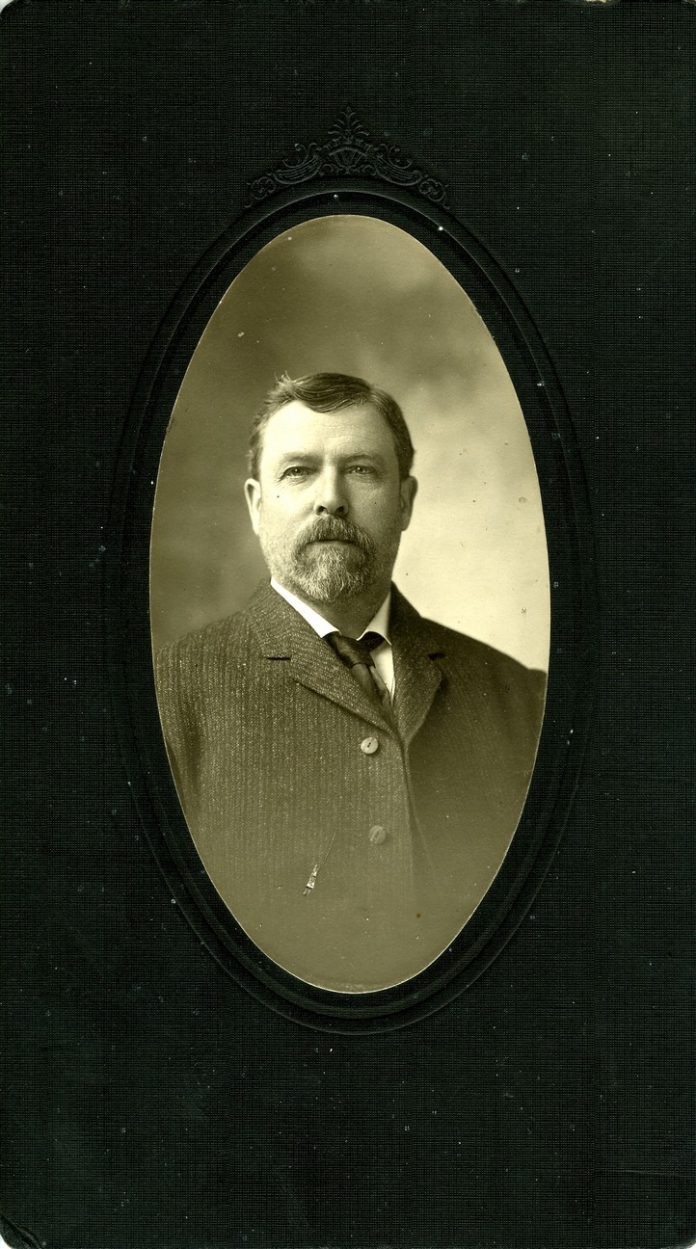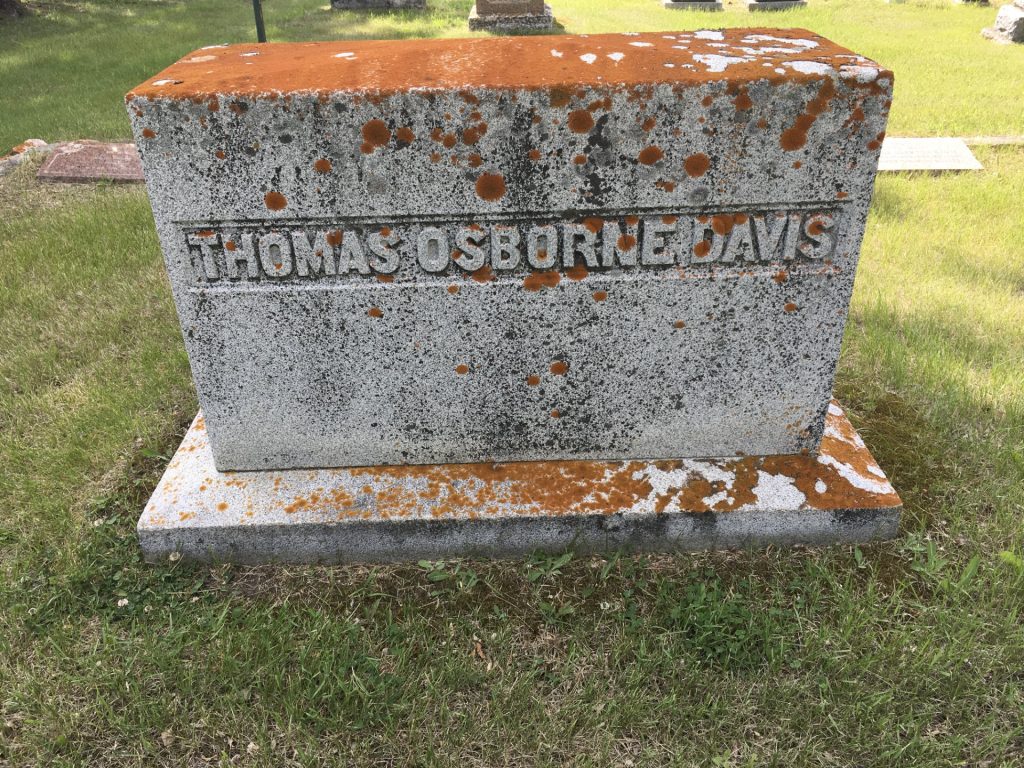
Prince Albert Historical Society
Born in Sherrington, Quebec, on Aug. 16, 1856, and succumbing to death in Prince Albert, Saskatchewan, on Jan. 23, 1917, Thomas Osborne Davis managed to fill the years in between with considerable activity which left a lasting legacy both locally and nationally.
Born to Anne and Samuel Davis, B.A. (Trinity College, Dublin), T.O. Davis was educated at home and in private schools. At the age of 24, Davis arrived in Prince Albert in 1880, a year after settling in Winnipeg, to which he had travelled via Detroit, Chicago, and St. Paul.
Davis himself described Winnipeg at that time day as a “straggling street of shacks and little board houses. The most pretentious building in the city was the little old Queen’s Hotel. There were just a few straggling buildings at the back of the Main Street and all back of it was simply like a swamp.”
Davis left Winnipeg and went across the plains to Fort McLeod in Southern Alberta, having hired on to work with a survey party. Although the party had six or seven ponies and carts, these were loaded with provisions, so he had to walk all the way. Apparently, Fort McLeod was not to Davis’s liking, as he did not stay very long, returning to Winnipeg with a couple of ex-Mounties. They travelled with two ponies and two carts, returning to Winnipeg about four months after Davis had left. The trip totalled about 2,000 miles, all of which Davis had had to walk.
In the spring of 1880, Davis formed a partnership with a man named Joe Curran, and they started a store in Stony Mountain. In Winnipeg, they purchased a horse and wagon, and a grocery outfit with a tent, as well as buying some goods. Davis also ran a barber shop in addition to the store that they started. Even with the two businesses, the partners were not doing sufficient business, so Davis took a pack and started to peddle around the country. Recognising the situation as being a losing proposition, after about a month Davis sold his share of the business to his partner and returned to Winnipeg.
Hiring on with another party of surveyors, Davis headed out to Fort Ellice. His ability to speak French resulted in Davis becoming the procurement officer, resulting in him being sent out to buy horses. The survey crew left for Fort Ellice with seven carts. Davis was appointed the hunter for the party, primarily because he was the only member with a shot gun. With this gun, he was able to keep the crew pretty well supplied with ducks.
Travelling through Portage la Prairie to Rat Creek and then on to Pine Creek (now Carberry), they went to Rapid City and on to Shoal Lake, where the local Mounted Police checked their carts for liquor. Near Birtle, Davis met a man dressed in overalls. Having left the Mounted Police, with whom he had served for seven years, he was travelling back to Winnipeg to buy an outfit. To Davis’s surprise, and delight, he discovered that this man was his brother, whom he had not seen for seven years. Davis managed to get the surveyor to release him from employment and went back to Winnipeg with his brother. After buying a pair of wild steers, a yoke of oxen, and five carts and wagons, they bought a load of merchandise of all kinds, and joined by another man by the name of Bob Fish, they headed out for Saskatchewan. Their trip to Prince Albert took nearly two months, and was a continual battle against wet and muddy trails.
Arriving in Prince Albert in November of 1880, Davis indicated that he found that the community had a doctor by the name of Porter, who had arrived from Nova Scotia the previous year, an Anglican church which was the seat of the Bishop of Saskatchewan, John McLean, a hardware store operated by Jimmy Ashdown and Tom Agnew, and a tailor shop owned by a man named Smith. The blacksmith shop was run by a man named Plaxton, and there was a firm of contractors operating under the name of Bishop & Coombs. Down on the flat, Charles Mair ran a store, while Bill Dilworth lived further down the flats, and Stobart and Eden ran a trading post. Sandy McBeath lived in a shack, nearer to the old Presbyterian Mission church, where the Reverend Mr. Severight took services. Up on the hill stood an old windmill where the farmers ground their grain. There was a scattering of white people on Red Deer Hill, and to the east on the flats were men such as William Miller and Captain Moore. Lawrence Clarke was the factor of the Hudson’s Bay Company, although at that time he lived at Fort Carlton, and Philip Turner was in charge of the Company’s post in the east end of what is now Prince Albert.
The first winter, Davis lived across the river with a man named Dan Wilson. They built a shanty and dug a well. The winter was spent getting out logs and hauling in wood which they traded to the Hudson’s Bay Company. Some of the logs which they got out were used to build the first Methodist church in Goshen, after which Davis was the soloist in the choir, and Kate Hayes (the governess for the Lestock Reid family) was the organist.
The following spring, Davis hired out with two contractors (Bishop & Coombs) and assisted in building a number of log cabins in the Colleston district. In June of that year, he purchased a trading outfit consisting of nine carts and oxen, with which he freighted to and from Fort Ellice, driving the nine carts by himself, hitching and unhitching up to five times a day. On one occasion, due to the oxen having damaged feet as a result of the frozen ground, Davis found that he had to shoe them even though he had never performed that task before. He made the shoes out of the hoop of an old coal oil barrel, and fortunately he had nails with him with which he could attach the shoes.
In the spring of 1883, Davis bought two teams of horses and freighted supplies to Prince Albert to open his own store. He also bought two pool tables, the first pool tables in Saskatchewan. These he set up in a building called the Woodbine. Players paid 25 cents a game to play on these tables.
Davis freighted until 1890, gradually increasing and improving his stock. As Harry Ross noted at the time of Davis’s death, Davis was always ready for any business which might come his way. Subsequent to selling his store, he went into real estate and ranching. He owned considerable property, including houses and apartments, and owned land south of Prince Albert in areas now known as Davis and Osborne.
In the course of time, Davis took an interest in local politics. He was elected as an alderman in 1894, and became mayor of Prince Albert in 1895. Then, in a by-election in 1896 which occurred after Sir Wilfred Laurier chose to represent the seat in Quebec-East, which he had won in 1895 simultaneously with winning the Prince Albert seat, Davis was elected to the House of Commons with an overwhelming majority. Davis was re-elected in 1900, and was appointed as the Liberal whip for the west in 1901, and was summoned to the Senate on Sept. 30, 1904.
In 1885, Davis married Rebecca Bond Jennings of Prince Edward Island. They had five sons and three daughters, including Thomas Clayton Davis, who followed his father in politics and eventually became a diplomat.
Early in December 1916, Davis struck his head on a beam in the basement of his home at 305 – 19th Street East and sustained an injury. Shortly afterward, he began experiencing severe headaches. A blood clot on the brain was diagnosed, and a surgeon from Winnipeg operated to remove it. For some days thereafter, Davis’s health appeared to be improving. On January 22nd, 1917, he suffered a relapse and went into a coma from which he did not recover.

Senator Davis was buried from St. Alban’s pro-cathedral and is interred in St. Mary’s cemetery.
fgpayton@sasktel.net

